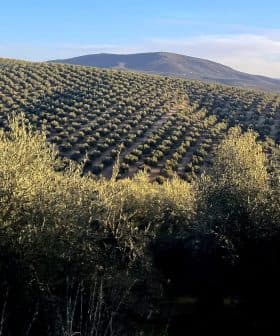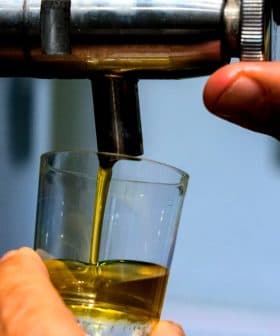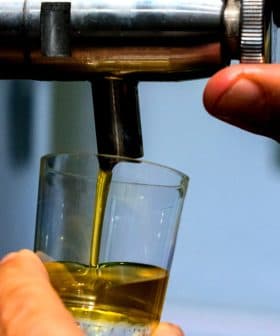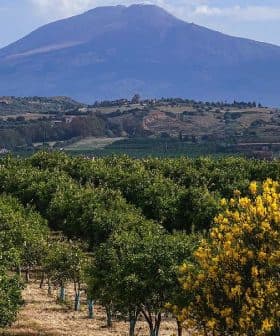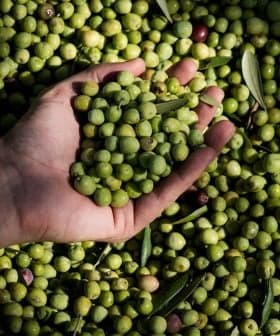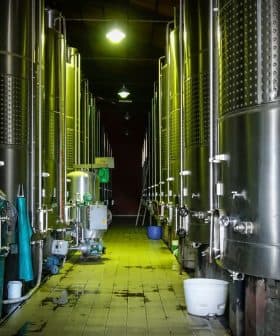Report Predicts Mediocre Harvest in Andalusia
The report cites unseasonably hot temperatures along with a lack of rain as the main reasons for the dip, which could see production drops of up to 50 percent in certain areas
 Photo courtesy of COAG Jaen
Photo courtesy of COAG JaenAndalusia is predicted to have a “medium-low” olive harvest in the upcoming season due to high temperatures and lack of rainfall, with some provinces like Sevilla and Jaén expecting production decreases of up to 50 percent. Despite the forecast, some in the sector believe it is premature to worry, as many olive trees are in good condition and may still produce a large harvest next year.
A new report released by Andalusia’s Coordinator of Agriculture and Livestock Organizations (COAG) has said that Andalusia should expect a “medium-low” harvest in the 2019/20 campaign.
Many producers in Spain were set to enter an off-year this campaign, but still expected an average harvest.
Making a forecast for the year 2020 is difficult given that a lot of time is left before the harvest season.
The provinces of Sevilla and Jaén are expected to be the hardest hit and may see production figures reduced by as much as 50 percent. Malaga and Cádiz are also expected to see decreases by as much as 30 percent.
In Córdoba, there are different yield estimates depending on the region, ranging from unaffected groves in Subbetica to ones that are expected to yield no olives in Los Pedroches.
See Also:Olive Oil ProductionOverall, Andalusia produces about 80 percent of Spain’s annual olive oil yield.
COAG Andalusia has attributed the drop in production to high temperatures and a lack of rainfall, which caused significant fruit losses and left other growers with olives that will not be worth harvesting for oil production.
Andalusia and the rest of Spain have experienced an unseasonably hot end to the spring, but temperatures are expected to cool over the next few weeks.
This reprieve may not last long though as the entire Iberian Peninsula is predicted to experience “long-duration heat waves” throughout the summer with temperatures in excess of 100 degrees Fahrenheit, according to a report from Accuweather.
Whether or not producers’ olive groves are irrigated has generally dictated what kind of production they should expect to see.
“The dry ones [without irrigation] show anything from no harvest to half of an average harvest,” the report said. “The irrigated areas are doing slightly better, although after a good set, some have also aborted fruits. Depending on the amount of water available and when irrigation started, the yield may vary, but the forecast should be between 50 percent and normal.”
However, some in the sector believe that the COAG Andalusia report is a bit premature and oil producers should not worry yet.
“Making a forecast for the year 2020 is difficult given that a lot of time is left before the harvest season,” Rafael Pico Lapuente, the director of the Spanish Association of Olive Oil Exporting, Industry and Commerce (Asoliva), told Olive Oil Times. “However, [many] olive trees are in a perfect state at present, so we should not rule out a large production for next year.”
In the 2018/19 campaign, Spain produced a record 1.77 million tons of olive oil, according to the country’s Ministry of Agriculture, Fishing and Food. The International Olive Council estimated Spain’s production to be a bit lower – 1.60 million ton – but has yet to revise these figures.
Pico Lapuente’s opinion was echoed by several farmers and other figures in the sector, many of whom expect this off-season to produce an average yield, though all said it was too early to predict and that farmers would need to wait until the end of the summer to see what happens.
“Olive trees thrive under stress,” Callum Henderson, an olive farmer and oil producer in the province of Granada, told Olive Oil Times. “It’s still early. My guess is the yield will be down, but the quality will be good.”


